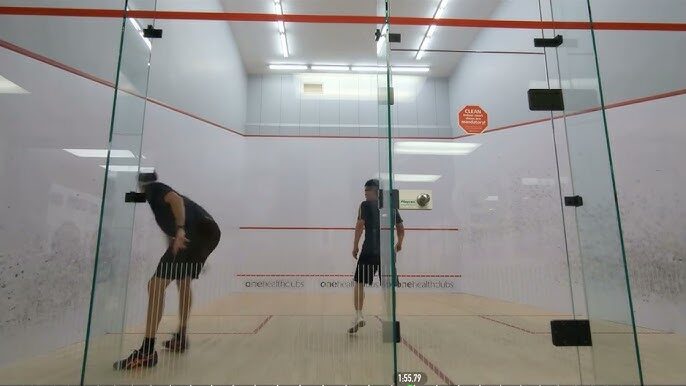Injury prevention and rehabilitation are crucial aspects of maintaining an active lifestyle and recovering from physical setbacks. Whether you’re an athlete, fitness enthusiast, or someone recovering from an injury, knowing how to prevent injuries and rehabilitate effectively is essential for long-term health and performance. This guide will provide you with injury prevention and rehabilitation exercises that can help protect your body and recover quickly from injuries.
Understanding Injury Prevention
Injury prevention refers to the strategies and exercises designed to reduce the risk of injuries. It’s particularly important for individuals who engage in physical activities, whether it’s running, lifting weights, or playing sports. By focusing on the following key components, you can significantly lower the chances of getting injured:
- Stretching: Stretching exercises increase flexibility and reduce muscle stiffness, which helps avoid strains or tears.
- Strengthening: Building strong muscles provides better support to your joints, reducing the risk of sprains and other injuries.
- Balance and Coordination: Enhancing your balance can prevent falls, ankle sprains, and other similar injuries.
- Posture: Maintaining proper posture during daily activities and exercise minimizes the risk of back and neck injuries.
- Rest and Recovery: Giving your body adequate time to rest and recover is as important as exercise in preventing overuse injuries.
Key Components of Injury Prevention
- Stretching Stretching is one of the simplest yet most effective injury prevention strategies. Stretching can be categorized into two types: dynamic and static. Dynamic stretching, which involves controlled leg and arm swings, is ideal for warming up before exercise. Static stretching, such as holding a stretch for 20-30 seconds, is better suited for cooling down after a workout.
- Strengthening Building muscle strength, especially in key areas like the core, legs, and shoulders, can help prevent injuries. Strong muscles act as shock absorbers and protect the joints from excessive strain. Incorporating strength training exercises such as squats, lunges, and planks into your routine can help you build a solid foundation of strength to prevent injuries.
- Balance and Coordination Balance exercises improve your body’s ability to stay upright and control movements, which helps prevent falls. Simple exercises like standing on one leg or using a balance board can significantly enhance your coordination and prevent ankle sprains, knee injuries, and other balance-related injuries.
- Posture Correct posture plays a critical role in injury prevention. Poor posture can lead to back, neck, and shoulder injuries, especially in sedentary activities like sitting at a desk for long periods. Simple posture corrections, like sitting with your back straight and shoulders back, can reduce the risk of such injuries.
- Rest and Recovery Overtraining and lack of rest can lead to overuse injuries. It’s essential to schedule rest days into your workout routine to allow your muscles and joints to recover. Active recovery, such as gentle stretching or low-intensity activities like walking, can also be beneficial.
Rehabilitation Exercises for Common Injuries
Rehabilitation exercises help speed up the recovery process after an injury. Here’s a look at some effective rehabilitation exercises for common injuries:
- Knee Injuries: Rehabilitation for knee injuries often involves strengthening the quadriceps and hamstrings. Exercises like squats, leg raises, and hamstring stretches help restore mobility and strength.
- Back Injuries: For back injuries, exercises focusing on spinal mobility and strengthening the core muscles are essential. Gentle stretches, such as the cat-cow stretch, and core exercises like planks help in recovery.
- Ankle Sprains: Rehabilitation for ankle sprains includes exercises that focus on improving range of motion and strength. Ankle circles, toe taps, and resistance band exercises help to restore function and prevent future sprains.
- Shoulder Injuries: Shoulder injuries, such as rotator cuff strains, can benefit from exercises like shoulder presses, rotator cuff strengthening exercises, and stretches that improve range of motion.
When to Seek Professional Help
While at-home rehabilitation exercises can be very effective, it’s essential to seek professional help if the injury doesn’t improve after a few days or if you experience severe pain, swelling, or inability to move the affected area. A physiotherapist or healthcare provider can provide a personalized rehabilitation plan and ensure proper healing.
Tips for Effective Injury Prevention
- Proper Footwear: Wearing appropriate shoes for your activity can prevent foot and ankle injuries. Whether you’re running, playing sports, or hiking, make sure your footwear supports your specific needs.
- Balanced Workout Routine: Incorporate a mix of strength, flexibility, and cardiovascular exercises into your routine to ensure overall body balance and injury prevention.
- Hydration: Staying hydrated is crucial for muscle recovery. Dehydration can lead to muscle cramps and injuries, so drink plenty of water throughout the day.
- Listen to Your Body: If you feel pain or discomfort during a workout, stop immediately. Pushing through pain can lead to more serious injuries. Rest when needed and avoid overtraining.
Injury Prevention for Athletes vs. Everyday People
The approach to injury prevention differs slightly between athletes and everyday people. Athletes often engage in high-intensity training and may need sport-specific injury prevention strategies, such as agility drills, plyometric exercises, and sport-specific strength training. On the other hand, for everyday people, a balanced approach that includes general strength training, stretching, and mobility work is sufficient to reduce the risk of injury during daily activities.
Conclusion
Injury prevention and rehabilitation exercises are vital components of a healthy lifestyle. By incorporating stretching, strengthening, balance exercises, and proper rest into your routine, you can significantly reduce the risk of injuries. If an injury occurs, rehabilitation exercises tailored to the specific injury can help you recover faster and return to normal activity. Remember, consistency and listening to your body are key factors in both preventing and recovering from injuries.




